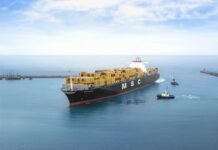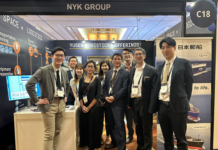
The impact of technology on the shipping industry will grow in the coming years as companies increasingly introduce cloud-based software and apps in their businesses, suggests cloud software provider Hanseaticsoft’s managing director Alexander Buchmann.
GlobalData’s Ship Technology writer, Varsha Saraogi says: “Technology has become the driving force across many industries and the maritime industry is beginning to embrace its advantages. Companies are now opening up to the countless benefits different technologies offer, and one such technology is cloud computing.
“However, cloud computing take-up by the shipping sector is currently slow. What are the reasons for this?”
Buchmann tells GlobalData: “Ship managers are not letting go of the old process because they are afraid. The change to using modern technology has to be management driven.
“Ship managers should hire consultants who will help them streamline the entire digital process. Most of the people are still doing the same job as they did ten years ago and managers who don’t embrace technology and use the cloud will just be left behind.
“For example, in the past, data synchronization was a slow process and was done three or four times a day. As a result, the data packages had to be very small. But with 5G onboard and a better internet connection, ships can have real-time data exchange with the office instead of sending out an email and waiting 12 hours for a reply.
“Many companies just want to jump on the bandwagon and do something digital, but they don’t know what. Shipowners are harboring a fear of missing out and therefore are looking to invest in technology. So companies tell us that they want to invest, but don’t know why and where.
“It’s not just about investing in technology and hoping everything will change. It’s also changing the way management it’s done. What we’ve seen is that companies are buying our software but want us to change it in a way that it works like the old software. They’ve been working with older systems for the last 15-20 years.
“It all comes down to the willingness of ship managers to use technology. I think shipowners are more likely to embrace new technology because they see the financial benefits. But for a third-party ship manager – who might not operate a particular vessel in three months or six months’ time – the priority is to keep the operating expenses (opex) down so they will not want to invest into software because, in the short term, this will increase the opex.”
อัพเดตข่าวสารและบทความที่น่าสนใจในอุตสาหกรรมโลจิสติกส์ก่อนใคร ผ่าน Line Official Account @Logistics Mananger เพียงเพิ่มเราเป็นเพื่อน @Logistics Manager หรือคลิกที่นี่















